
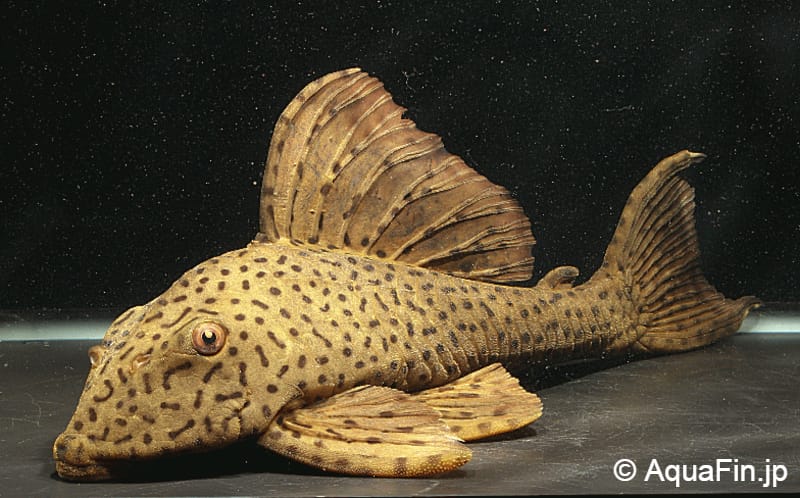
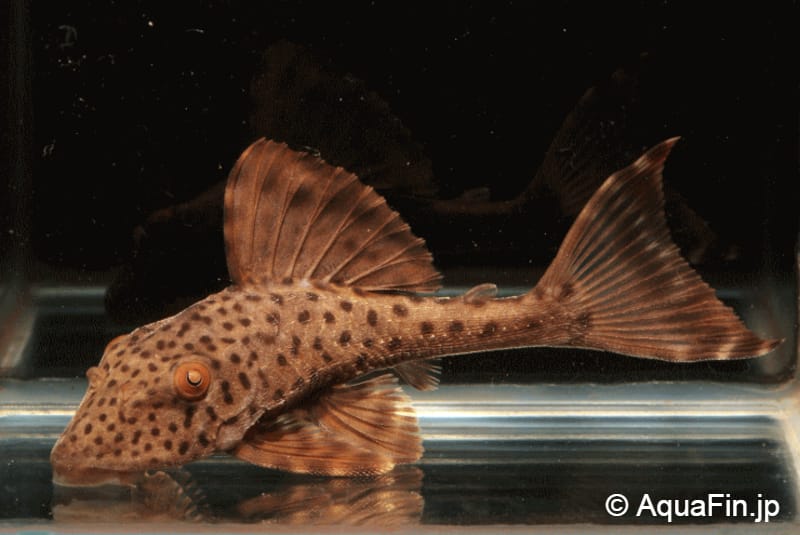
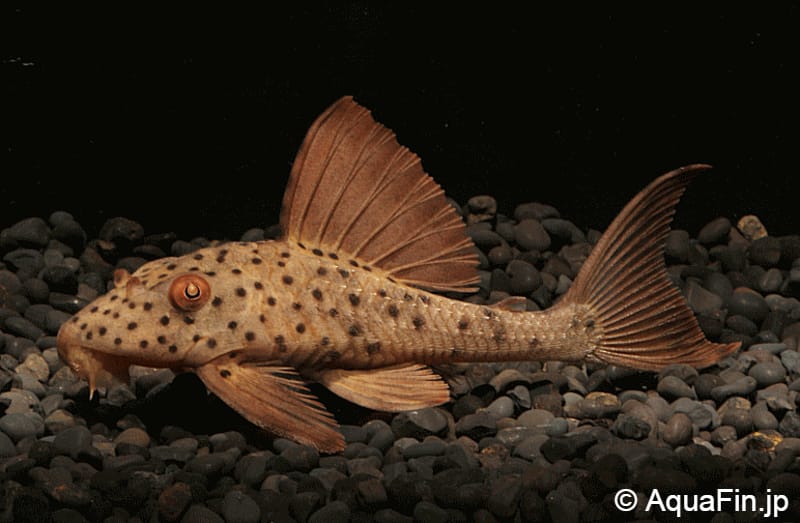
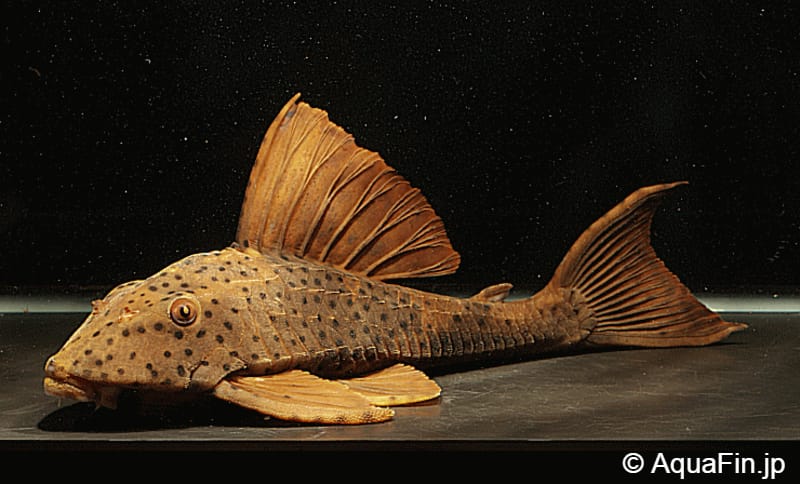
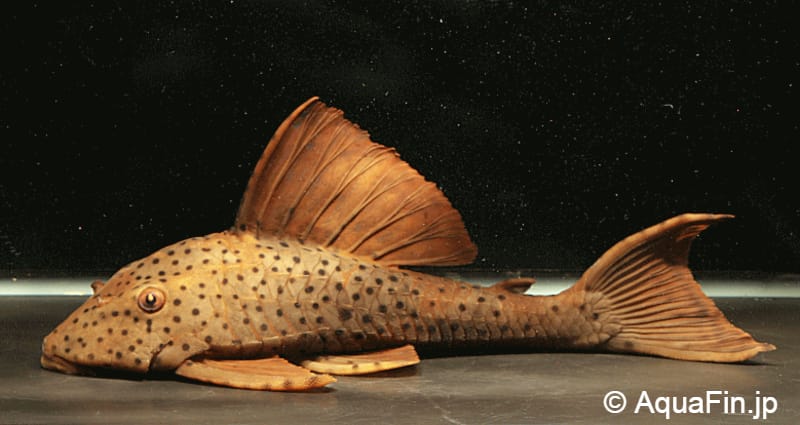
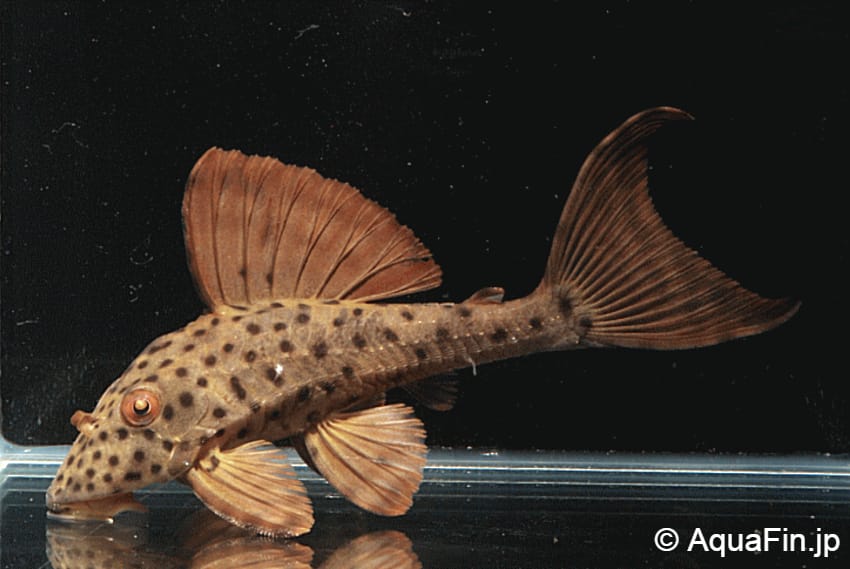
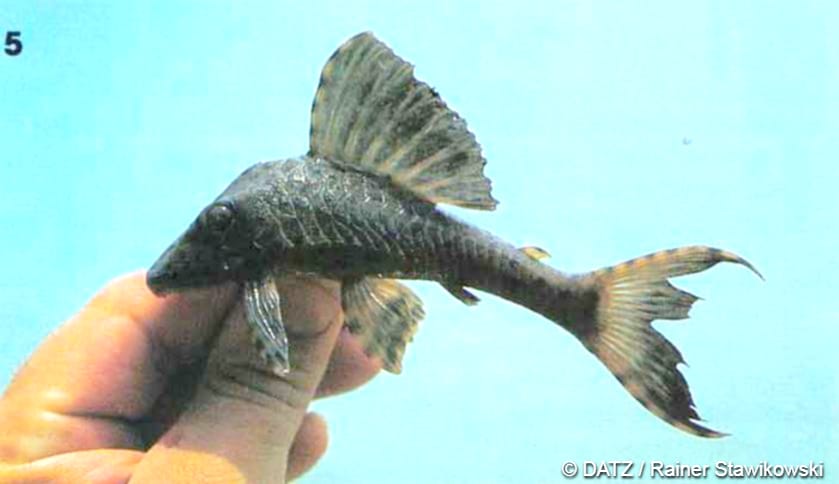
Some L-numbers are shrouded in mystery. If you go through the archives, you will find some examples of fish portrayed in such a way that making a proper identification can be quite challenging. Among the elder L-numbers, some were only published with a hand-held photo from the field, accompanied by a short text containing very basic information. Some of these fishes have probably never been imported to the hobby, for various reasons. Others might enter the hobby at some point, although without the original L-number attached to them – simply because it can be hard to tell it’s the same fish. In Japan, rare and unusual (and expensive) Plecos show up more frequently than in Europe and the US. Importer Aquashop Fin is a good example of a dealer offering such rarieties, and they have on a few occasions had this fish called “Cochliodon Teles pires” in stock. A real eye-catcher. Obviously, Rio Teles Pires is not unheard of as a place where ornamental fish are collected. A prime example is Panaque armbrusteri (L27), of which a nice variety comes from this area. However, this species of Hypostomus from the “Cochliodon-group” has not been traded on our shores, as far as I know.
Facts:
Name: Hypostomus sp.
Trade names: Red Eyed Cochliodon, L138
Origin: Rio Teles Pires, Rio Tapajos, Brazil.
Maximum size: 30 cm / 5”
From the Rio Tapajos system we know of a few types of Hypostomus from the Cochliodon group. The best known species is H.soniae, L137. L360 from Rio Jamanxim, an affluent to Tapajos, might be a variety of the same species. Other forms from this riversystem are L139, L366, L367 (H.labyrinthus) and L517. None of these correspond in appearance to the fish imported from Rio Teles Pires, but L138 seems to be a match. L138 was first presented in DATZ in September 1993, but the original picture is of rather poor quality. I have enhanced it slightly for inclusion on this profile, and by doing so one can just tell it’s a black-spotted fish. This is confirmed by Seidel & Evers in their Catfish Atlas 2, where they include a perfect picture of a juvenile fish imported in 1997 together with H.soniae (L137), just as mentioned in the original publication in DATZ. This fish has a very similar appearance to the fish from the AquaFin website, the red eyes and faintly patterned fins is a good match. Although the original publication of L138 cites Rio Tapajos as origin, it’s not unlikely that the distribution of this species includes the Rio Teles Pires. They may be more common in this part of the Tapajos system, which may also be why it was never a regular encounter in the hobby like H.soniae. The lack of pictures and the lack of information has surely also contributed to the lack of trading of L138, which would certainly be a desired species if more people knew of its existence! Some online sources which are normally trustworthy, such as ScotCat and Planet Catfish, unfortunately show pictures of other species in their profiles for L138. This mistake is probably due to the lack of decent comparative material, making identification difficult.
Hypostomus species from the Cochliodon-group are peaceful, calm Plecos suitable for slightly larger aquariums. They need wood to chew on (important for their digestion), and if you keep broad leaved plants with them these will most likely be chewed on too! Vegetables and food tablets with a high level of green matters should be offered as staple foods, with some crustaceans and insect larvae added. Obviously, pieces of wood should make out most of the furnishing, along with suitable caves made of rock. Breeding of these species is not a common encounter, probably only very few fishkeepers have even tried. When it does happen, it’s in typical manner where the male guards the eggs and the hatchlings in his cave until they are free-swimming and able to feed on their own.
More info:
